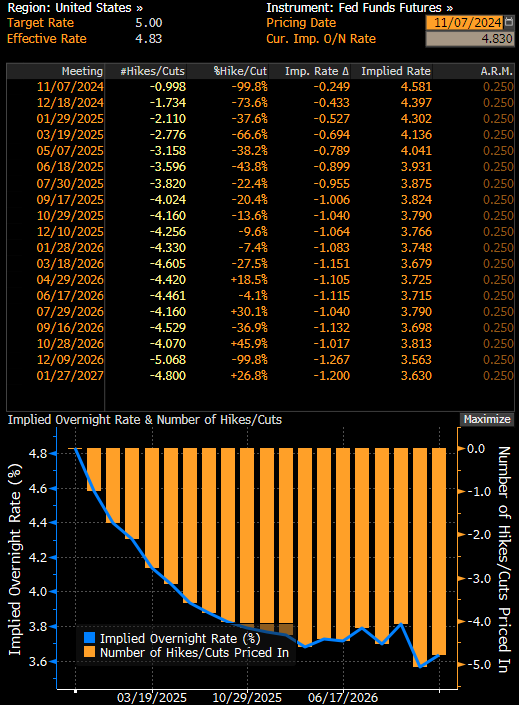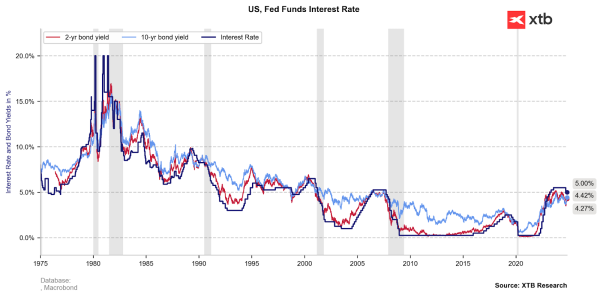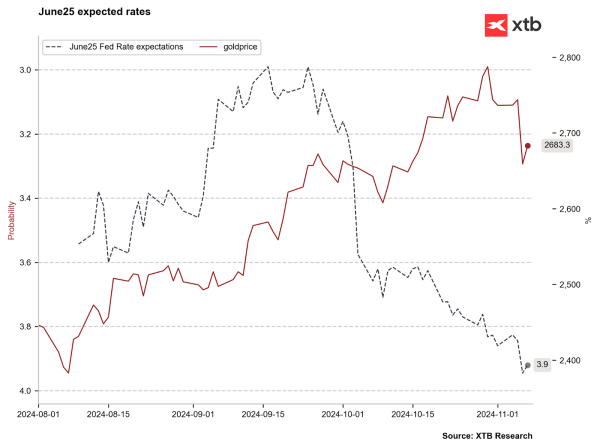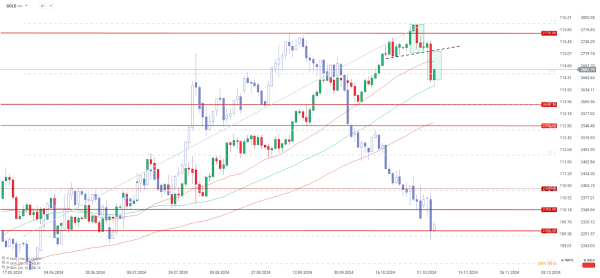🟡Gold rises 0.85% ahead of Fed decision
Gold attempts to recover losses before Fed decision, following sharp declines linked to Trump's election victory
Market turmoil continues in the wake of the US presidential election, which has brought significant volatility. Trump's victory appears to have made the Fed's task even more challenging, although today's decision is unlikely to surprise. Nevertheless, a stronger shift in Fed communication compared to September's meeting could signal a reaction to the election results, even as the market had already indicated the need for fewer rate cuts. How might today's Fed decision impact key markets, and will the Fed signal a more cautious approach to future rate cuts?
Rate cut is certain. What's next?
Today's rate cut is priced in with a 99.8% probability, according to US interest rate futures contracts. A December move is priced at 73.6%. Last month, the market briefly priced equal chances for a cut or hold in December. Trump's election hasn't significantly altered expectations for the current year but has slightly reduced expectations for cuts next year. However, during the September meeting, cuts of 200 basis points were expected by September next year. Currently, less than 100 basis points are priced in.

Source: Bloomberg Finance LP, XTB
Strong Q3 economic growth suggested the Fed wouldn't be forced into aggressive cuts. Conversely, the dismal October NFP report showed growth of just 12,000. Although the US labor statistics bureau indicates the data is somewhat distorted by hurricanes, some Fed members, likely including Powell, will be more concerned about the labor market, potentially maintaining the need for further cuts, at least for now.
On the other hand, some members wanted only a 25 basis point cut in September. Now, with the potential for higher inflation expectations, some members may want to pause cuts in December or early next year.
December forecasts are crucial
While a December cut is currently highly probable, much could change looking at economic forecasts for next year. The Fed will need to consider Trump's economic agenda and tariffs on foreign products. According to Janet Yellen, a 1% GDP deficit increase over 10 years raises the neutral interest rate by 30-40 basis points. Theoretically, this could mean more members seeing a higher neutral rate in December. Currently, Fed members' expectations are widely dispersed. It's worth remembering that all this influences long-term market yields, potentially limiting economic growth potential. However, these are considerations for December/January, while now Powell will likely convince his Fed colleagues that rate cuts are necessary to support the labor market situation.

US interest rates and yields. Source: Bloomberg Finance LP, XTB
How will the market react?
Today's market picture is largely shaped by yesterday's US presidential election results and today's rebound. However, reactions can be expected at 20:00 and after 20:30 during Powell's press conference. If Powell maintains previous communication and continues to indicate the need for cuts due to weakening labor market conditions, a dollar decline, gold rebound, and further stock market support are possible. Conversely, if Powell starts discussing Trump's policy impact on inflation expectations and yields, it may signal the Fed is considering future fiscal policy now. This could further limit expected rate cuts, which is good for the dollar, negative for gold in the short term, and negative for stock indices. However, it's worth remembering that further US deficit increase is very positive for gold in the long term.

Recently, a rate of 3.0% was priced in for June, now it's almost 4%. Source: Bloomberg Finance LP, XTB

Gold is limiting yesterday's declines, rebounding today from the 50-period average. If the Fed doesn't change its communication, a rebound to around 2700 USD is possible today, where the 25-period average is located. On the other hand, speculation about inflationary revival next year from the Fed could bring gold back to around 2650 USD per ounce. Source: xStation5